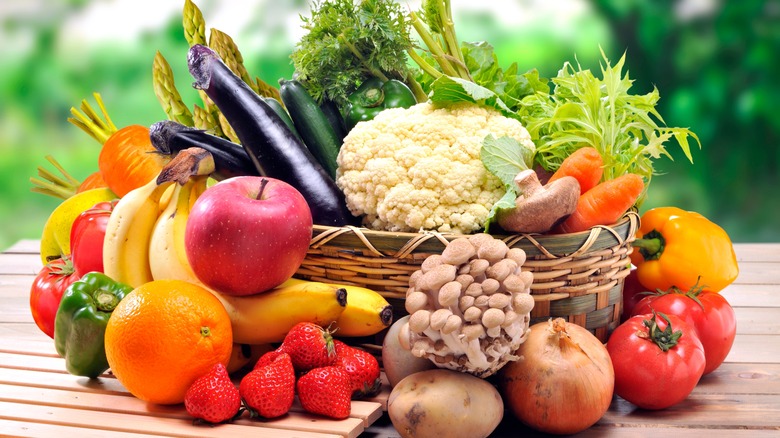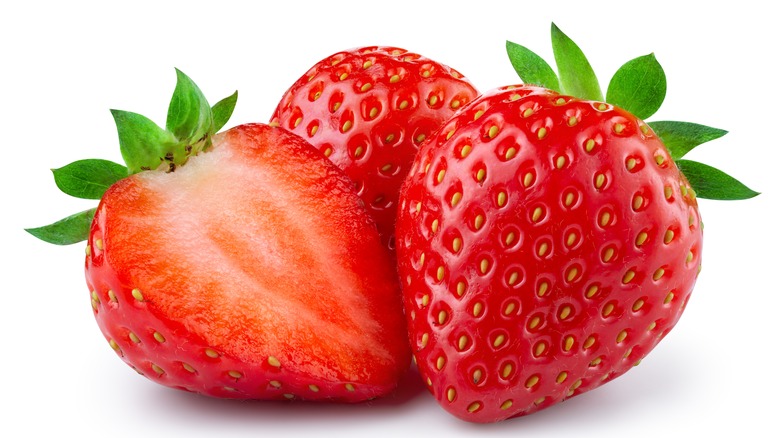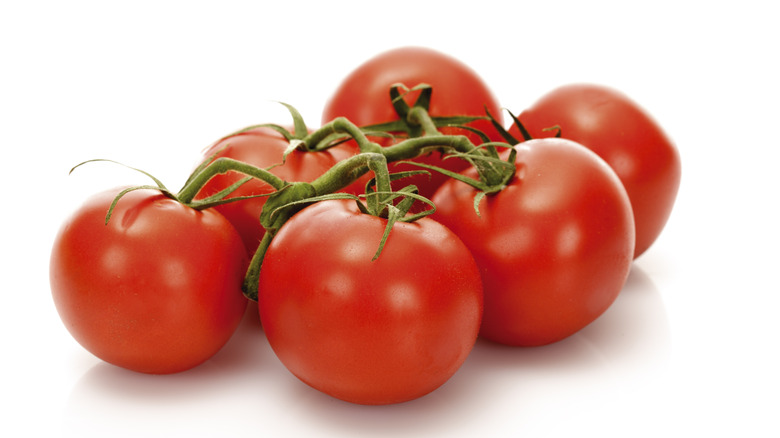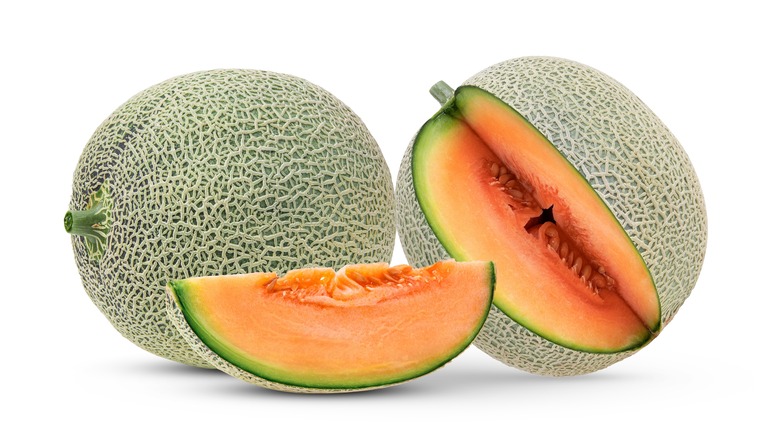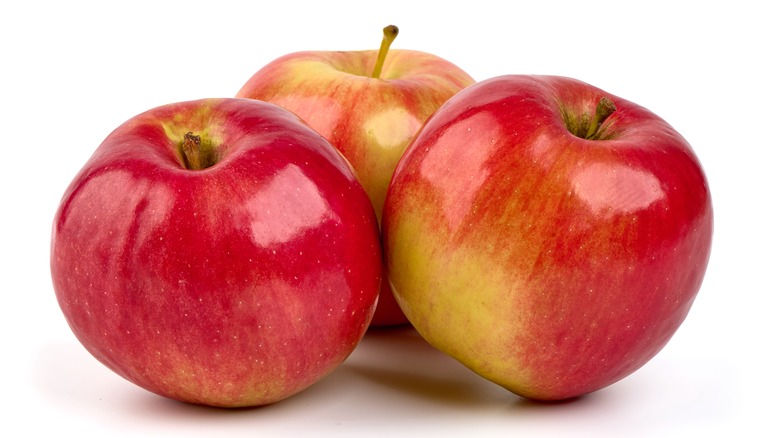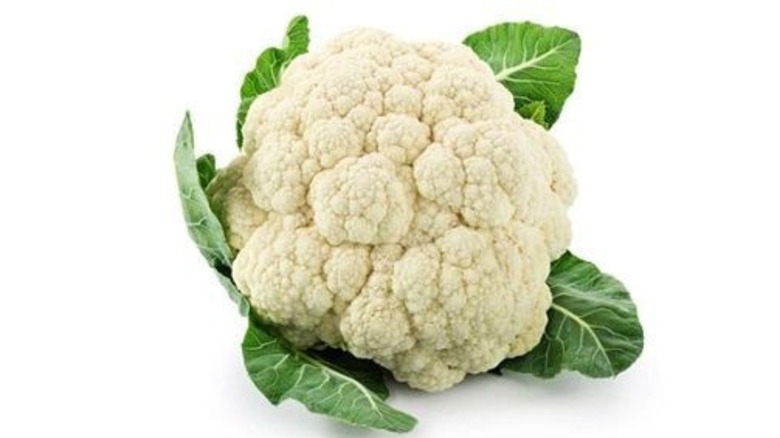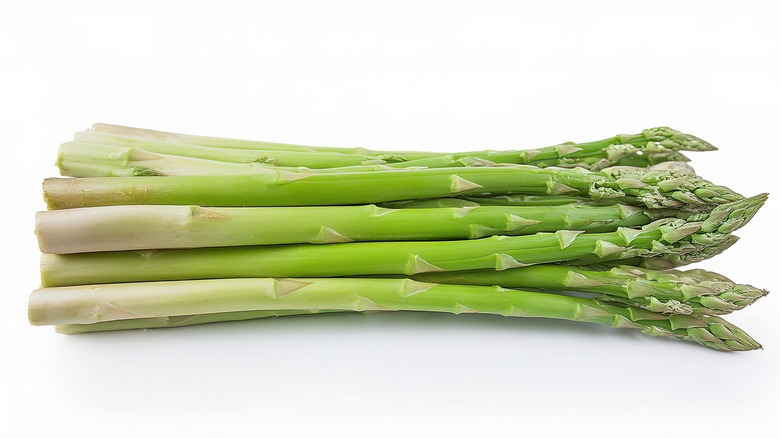6 Fruits And Vegetables That Are More Hydrating Than We Thought
We all know the obvious choices for hydrating produce — the fruits and vegetables that are so juicy, you practically need a towel to keep your face clean while eating them (we're looking at you, watermelon!). And of course, there's the cucumber, the spa-day staple that's basically just crunchy water in a green jacket.
But did you know there are plenty of other fruits and vegetables that are sneakily more hydrating than you'd expect? Staying hydrated is a bigger deal than many people think; it's essential for keeping your body running smoothly. Water is a key player in nearly every bodily function, from aiding digestion and flushing out toxins to supporting your immune system. It also influences your mental well-being, helping you sleep better, think clearer, and maintain a balanced mood.
In addition to chugging H2O, why not enjoy some of these water-rich foods to keep your hydration on point? You might be surprised by one fruit that's even more hydrating than watermelon. And here's something that caught us by surprise: there's a vegetable that actually becomes more hydratiing when you cook it — how cool is that? Let's explore these hydration heroes and give your body the refreshment it deserves.
1. Strawberries
Strawberries might not be the first fruit you think of for hydration, but surprise! These little red gems are actually just as hydrating as watermelon with an impressive 92% water content. The beauty of strawberries is that they're always delicious, whether enjoyed on their own or dressed up in a variety of ways. Toss them into a fresh spinach salad with pecans and feta, blend them into a strawberry banana smoothie, or layer them in a yogurt parfait with crunchy granola. The options are endless to keep your hydration up and your taste buds happy.
Just remember, while cooking strawberries might bring out their sweetness, it also reduces their water content and some of their vitamin power. Freezing is a bit better, but fruit still loses some of its moisture content when frozen. The best way to enjoy strawberries for maximum hydration and nutrition is to keep them raw. Speaking of vitamins, a single serving of strawberries packs more Vitamin C than an orange, which is great for boosting your immune system and keeping your skin glowing. Plus, they're loaded with antioxidants that help reduce inflammation, which is key in protecting against various health conditions, including Alzheimer's.
2. Tomatoes
By now, most of us are aware that tomatoes are technically a fruit, not a vegetable — if this is news to you, go ahead, we'll wait while you Google it. Feeling enlightened? Great, let's talk tomatoes. They are the most hydrating fruit out there, with a whopping 94% water content.
What's awesome about them is how easy they are to sneak into meals. Add them to a sandwich, mix fresh ones into guacamole, or enjoy a classic Caprese salad. You can even mix them into a homemade salsa — try adding pineapple for a delicious upgrade. Plus, there are tons of different tomato varieties you can try, each with its own unique flavor profile. From sweet cherry tomatoes to tangy heirlooms, your hydration levels will be soaring with all the recipes you make.
Tomatoes also pack a punch with lycopene, a powerful antioxidant that helps protect your skin from sun damage. While it's no replacement for sunscreen, it's a fantastic ally in your skincare routine, working from the inside out to support a radiant complexion. Remember, raw tomatoes are your best bet for hydration. Cooking or freezing them causes some loss of water content and vitamins, so stick to raw recipes if you can.
3. Cantaloupe
Usually, watermelon steals the melon spotlight, but it's time to give some well-deserved attention to the often-overlooked, yet highly hydrating, cantaloupe. With a remarkable 90% water content, cantaloupe might not be quite as hydrating as watermelon, but it still packs a powerful punch. Its natural juiciness makes it feel like you're indulging in something sweet, healthy, and water-rich all at once.
Cantaloupe is in season from June to October, when it's at its sweetest and juiciest. The classic fruit salad featuring cantaloupe, honeydew, and berries is a timeless favorite, but there are countless other ways to enjoy this versatile melon. Blend it into a creamy orange cantaloupe smoothie for a refreshing treat, or add it to a salad with tomatoes for a surprising flavor combo. Try prosciutto-wrapped cantaloupe for a savory-sweet appetizer, or whip up a chilled cantaloupe soup for a light, refreshing starter. For breakfast, create a crunchy yogurt and cantaloupe bowl by cutting out the center of the melon and filling it with yogurt, granola, and berries. It's both delicious and Instagram-worthy.
Along with being incredibly hydrating, cantaloupe is loaded with electrolytes that replenish the minerals your body loses during sweat. Plus, cantaloupes contain lutein and zeaxanthin, antioxidants that support eye health and can help keep your vision sharp as you age.
4. Apples
We were kind of surprised by how hydrating apples are — given their firm and crunchy texture, you wouldn't think they'd be packing 86% water content; they are actually more hydrating than both grapes and cherries. One of the best things about apples is their versatility and the variety of types available, from juicy honeycrisps to tart granny smiths.
Apples are easy to take on the go — just toss one in your bag for a quick snack. Pair them with peanut butter for an irresistible combination, or get creative with a raw applesauce by blending them with cinnamon, lemon, and dates. Apple pie is probably the first thing that comes to mind when we think of apples, and of course, you're having that pie — we insist! Just keep in mind that cooking apples reduces their water content. For optimal hydration, enjoy a fresh apple alongside your warm slice of pie. Apples also shine in dishes like an autumn apple salad with walnuts and cranberries or an apple slaw that can be deliciously added to sandwiches or enjoyed on its own.
Health-wise, apples are loaded with fiber, which aids in digestion, and they're rich in Vitamin C, supporting your immune system. Plus, the antioxidants in apples help fight inflammation and support overall health. There's a reason an apple a day is said to keep the doctor away ... and apple's water content just might have something to do with it.
5. Cauliflower
Cauliflower is the hidden hydration superstar that we definitely didn't see coming. With an incredible 92% water content, it's hard to imagine that cauliflower is just as hydrating as watermelon — but it is. And here's the kicker: cauliflower actually becomes more hydrated when cooked, as it absorbs water during moist-heat cooking methods like boiling or steaming. However, if it's baked or roasted, it loses water instead because these dry-heat methods don't provide any moisture, causing it to release its natural moisture.
Although moist-heat cooking methods leave out popular new preparations for cauliflower like pizza crust, some would argue cauliflower tastes best when it maintains its simple roots. It's delicious when paired as a side with seasonings like garlic, rosemary, and olive oil. Without changing the integrity much, you can make a creamy cauliflower soup by blending steamed cauliflower with broth, cream, and spices. You can also try cauliflower mash — a smooth, velvety side dish that pairs well with just about any meal. Or enjoy it raw, dipped in hummus, or as a crunchy addition to salads.
Beyond hydration, cauliflower shines as a nutritional powerhouse. It's packed with Vitamins C and K, essential for immune function and bone health. It's also rich in fiber, aiding digestion and maintaining a healthy gut. Additionally, cauliflower is high in choline, a nutrient vital for brain development and metabolism. However you eat it, cauliflower is a delicious, water-rich addition to your diet that proves you don't have to sacrifice taste for health.
6. Asparagus
Asparagus might not make your mental list of water-rich produce, but these green spears deserve a spot on your plate. Not only does asparagus carry 92% water content, but it also retains this hydration even after cooking. While typically enjoyed cooked, asparagus can also be eaten raw with the right preparation. Shave the spears thinly for a crisp and refreshing addition to salads, or pair them with your favorite dip for a crunchy snack. Raw asparagus has a bright, grassy flavor that's ideal for light, summery dishes.
Asparagus really shines when cooked, developing a tender, slightly nutty flavor that pairs beautifully with various ingredients. Like with cauliflower, use moist-heat cooking methods, such as steaming or boiling, to maintain its high water content. Interestingly, a method combining boiling and steaming has been considered the best way to cook asparagus for over 2,000 years. Asparagus is a classic side dish for salmon and chicken, where it's often dressed with lemon, olive oil, and spices. It's also excellent when mixed into a savory pasta or on a flavorful omelet. For something extra special, try wrapping asparagus in prosciutto or preparing a comforting, creamy asparagus soup.
Asparagus is full of dietary fiber, great for digestion, and loaded with antioxidants like glutathione, known for its anti-aging benefits. Whether you enjoy it raw or cooked, asparagus will keep you feeling revitalized, so go ahead and add a healthy dose of green spears to your plate.
